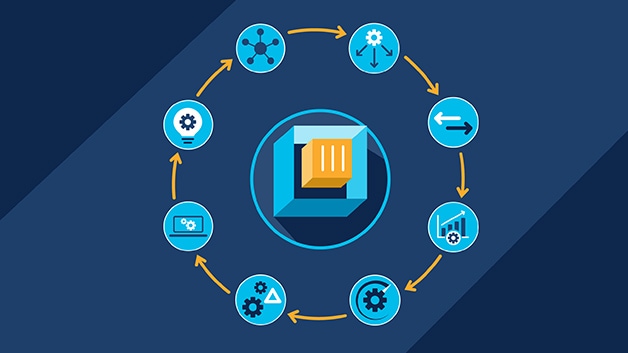In an increasingly digital world, the importance of security cannot be overstated. Organizations worldwide need to protect their sensitive information from cyber threats and security vulnerabilities that can lead to data breaches, loss of reputation, and financial repercussions. One effective approach to enhancing security is through Vulnerability Assessment and Penetration Testing (VAPT) methodologies. VAPT combines two crucial processes to identify weaknesses in a system and validate its overall security posture. This article delves into VAPT methodologies, their significance in improving security, and how organizations can effectively implement them.
Understanding VAPT Methodologies
VAPT encompasses two distinct yet interrelated processes: vulnerability DevOps/SRE and penetration testing. Vulnerability assessment involves identifying, quantifying, and prioritizing vulnerabilities in a system, application, or network. This process typically utilizes automated tools to scan for known weaknesses and misconfigurations. On the other hand, penetration testing involves simulating real-world attacks to exploit identified vulnerabilities and assess the impact of a successful breach. By integrating these methodologies, organizations can gain a comprehensive understanding of their security weaknesses and take informed measures to mitigate risks.
The Importance of Vulnerability Assessment
Vulnerability assessment plays a critical role in the overall security strategy of an organization. By proactively identifying vulnerabilities, organizations can address potential risks before cybercriminals have the opportunity to exploit them. This assessment should be conducted regularly, especially as the threat landscape continually evolves. Moreover, vulnerability assessments help organizations comply with regulatory requirements and industry standards, as many mandates require regular security assessments to ensure data protection.
Techniques for Conducting Vulnerability Assessments
Several techniques are employed during vulnerability assessments to identify and analyze weaknesses. These techniques can be categorized into two main types: automated scanning and manual testing. Automated tools, such as vulnerability scanners, can quickly assess systems for known vulnerabilities, providing organizations with an efficient means to evaluate their security posture. However, automated scanning alone may not uncover all issues, particularly those that require human insight.
Manual testing complements automated scanning by allowing skilled security professionals to assess systems for complex vulnerabilities that automated tools might miss. This combination enhances the efficacy of vulnerability assessments, ensuring that organizations can detect both common and sophisticated security flaws.
The Role of Penetration Testing
Penetration testing is the next critical step in VAPT methodologies. After vulnerabilities have been identified, penetration testing simulates attacks to validate the effectiveness of security measures. This process helps organizations understand how attackers could exploit vulnerabilities and what impact such exploits might have on systems, applications, or networks. By experiencing the consequences of a successful attack in a controlled environment, organizations can prioritize remediation efforts based on real-world scenarios.
Types of Penetration Testing
There are several types of penetration testing methodologies, including black-box, white-box, and gray-box testing. Black-box testing entails a scenario where the tester has no prior knowledge of the system, mimicking the approach a real attacker might take. This method evaluates security measures from the perspective of an outside entity attempting to breach the system.

Conversely, white-box testing provides the tester with complete access to the system, including source code and architecture documentation. This approach allows for a more in-depth examination of potential vulnerabilities and is particularly useful for organizations looking to address underlying issues.
Gray-box testing combines elements of both approaches, offering partial knowledge of the system. This method helps assess vulnerabilities while still mimicking the tactics of an informed attacker.
Best Practices for Implementing VAPT Methodologies
To effectively implement VAPT methodologies, organizations should follow best practices tailored to their specific security needs. First, organizations should establish clear objectives for their vulnerability assessments and penetration tests. Identifying which assets are critical and which threats pose the greatest risk is vital in prioritizing testing efforts.
Second, organizations should engage qualified professionals to conduct VAPT assessments. Skilled penetration testers and cybersecurity analysts possess the expertise needed to identify weaknesses and recommend appropriate remediation measures.
Regular testing is another best practice. Cyber threats continuously evolve, and systems can change over time, which necessitates ongoing assessments to ensure that security measures remain effective.
Finally, organizations should maintain open lines of communication regarding findings and remediation efforts. Sharing VAPT results with relevant stakeholders and incorporating feedback into the security strategy helps create a culture of security awareness.
The Benefits of VAPT Methodologies
Implementing VAPT methodologies offers numerous benefits to organizations. By proactively identifying and mitigating vulnerabilities, organizations significantly reduce their risk of data breaches and cyberattacks. Moreover, conducting regular vulnerability assessments and penetration tests helps organizations stay compliant with industry regulations and standards, improving their reputation among customers and stakeholders.
Additionally, VAPT methodologies facilitate continuous improvement of security posture. Organizations can refine their security policies, practices, and technologies based on insights gained from assessments, ultimately leading to a more resilient environment.
Conclusion
In conclusion, improving security through Vulnerability Assessment and Penetration Testing (VAPT) methodologies is essential for organizations striving to protect their sensitive data in an ever-evolving threat landscape. By comprehensively assessing their vulnerabilities and simulating real-world attacks, organizations can gain valuable insights into their security posture and effectively address weaknesses before cybercriminals can exploit them. Emphasizing regular assessments, utilizing skilled professionals, and fostering a culture of security awareness can significantly enhance an organization’s resilience against cyber threats. As we move forward in our digital journey, incorporating VAPT methodologies into security strategies will continue to play a pivotal role in safeguarding our most critical assets.





Comments